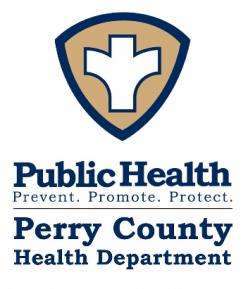[et_pb_section fb_built=”1″ admin_label=”section” _builder_version=”3.22″][et_pb_row admin_label=”row” _builder_version=”3.25″ background_size=”initial” background_position=”top_left” background_repeat=”repeat”][et_pb_column type=”4_4″ _builder_version=”3.25″ custom_padding=”|||” custom_padding__hover=”|||”][et_pb_text admin_label=”Text” _builder_version=”3.27.4″ background_size=”initial” background_position=”top_left” background_repeat=”repeat”]
Lead is a bluish-grey metal that occurs naturally in the environment. Although lead can be found in small amounts in the earths crust, most of it comes from man-made activities such as manufacturing and mining. In the past, lead has been used in gasoline, paint, metals, bullets, and batteries. But because of leads hazardous health effects, lead has been banned or significantly reduced in these products.
What are the signs of lead poisoning?
Many children with lead poisoning have no signs at first, which means the poisoning is not diagnosed or treated early.
What are the health effects of lead poisoning?
Lead replaces iron and calcium and affects many parts of the body, especially the nervous system. Lead is most harmful to children under the age of six, because a child’s growing body takes up the lead easily. Problems related to lead poisoning can last the childs whole life. Lower lead levels in children can cause: lower IQ, delayed growth, poor hearing, attention deficit hyeractivity disorders (ADHD). Higher lead levels in children can cause: mental retardation, convulsions, coma and death.
Is lead dangerous to a baby during pregnancy?
YES!! Lead can be found in the blood and bones of pregnant women who have been exposed to lead. Miscarriage, stillbirth, early delivery and low birth weight can occur with lead poisoning. Lead can also be passed to a newborn baby through breast feeding.
Should my child be tested for lead?
YES!! It is the law in Ohio that all children on Medicaid must be tested at ages 1 and 2. All children living in high-risk zip codes must also be tested at ages 1 and 2. Lead can come from many places and all children should be tested at least once to make sure there is no lead in the childs body.
What is considered a safe level of lead in a child’s blood?
There is no safe level of lead in a child’s blood. However, blood lead levels greater than or equal to 5 micrograms are a concern. Lead levels as low as 5 have been shown to harm a childs ability to reason and be successful in school.
What are the sources of lead poisoning?
Lead was used in house paint until 1978. Any house built before that year could have lead paint. Chips from this paint may be ingested or ground into dust, which may be eaten or breathed in. Children can be exposed in many ways but most exposure happens when a child puts things into their mouth when playing.
Lead can also be found in soil, water and certain items that come from other countries. Some items that have been recalled because they have lead are jewelry, candy, colored chalk, and toys.
What will happen if my child’s blood test indicates an elevated lead level?
When a childs blood test shows an elevated lead level, several things may happen. The childs home will be checked by the public health lead program to find out where the poisoning is coming from. A case manager will provide education about stopping and preventing lead poisoning. A group of medical staff will make sure your child gets the proper care. It is important to continue to check your childs blood lead levels and that your home is free from lead.
What happens next if my home has lead?
If there is lead in your home, an order to remove the lead is sent to the property owner. The owner must hire a worker who is licensed to get rid of lead in homes. You will get a letter and copy of the report with information on how to protect your child until the home is fixed. The health department, doctor, HealthChek coordinator, and other agencies may also be made aware of the findings. This information is also put into an Ohio Department of Health (ODH) database.
What should I do for my child who has lead poisoning?
If lead is found in your home, it is best to remove your children from the home until the lead is removed. If this can’t be done right away, take these actions, which can help keep lead away from your children.
-Have your children wash their hands often
-Keep places where you eat in the house clean
-Keep floors, window sills, and other surfaces free from dust. Use wet cleaning methods.
-Eat foods that are rich in calcium and iron.
If you have questions or concerns about your childs lead levels, please contact the Health Department, or
Ohio Healthy Homes and Lead Poisoning Prevention Program
Ohio Department of Health
614-728-4115 or 1-877-LEAD-SAFE
The EPA has a fantastic resource for preventing lead poisoning. The good news is that it is totally preventable. Check out the EPA Web site for more information.
![]()
The above information was provided by the Ohio Healthy Homes and Lead Poisoning Prevention Program
[/et_pb_text][/et_pb_column][/et_pb_row][/et_pb_section]
